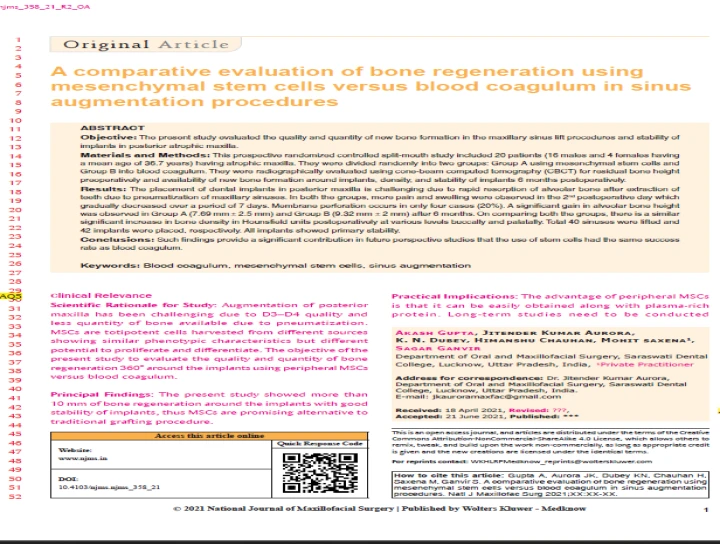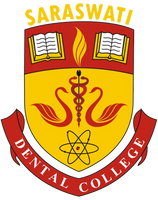
ABSTRACT
Objective: The present study evaluated the quality and quantity of new bone formation in the maxillary sinus lift procedures and stability of
implants in posterior atrophic maxilla.
Materials and Methods: This prospective randomized controlled split‑mouth study included 20 patients (16 males and 4 females having
a mean age of 36.7 years) having atrophic maxilla. They were divided randomly into two groups: Group A using mesenchymal stem cells and
Group B into blood coagulum. They were radiographically evaluated using cone‑beam computed tomography (CBCT) for residual bone height
preoperatively and availability of new bone formation around implants, density, and stability of implants 6 months postoperatively.
Results: The placement of dental implants in posterior maxilla is challenging due to rapid resorption of alveolar bone after extraction of
teeth due to pneumatization of maxillary sinuses. In both the groups, more pain and swelling were observed in the 2nd postoperative day which
gradually decreased over a period of 7 days. Membrane perforation occurs in only four cases (20%). A significant gain in alveolar bone height
was observed in Group A (7.69 mm ± 2.5 mm) and Group B (9.32 mm ± 2 mm) after 6 months. On comparing both the groups, there is a similar
significant increase in bone density in Hounsfield units postoperatively at various levels buccally and palatally. Total 40 sinuses were lifted and
42 implants were placed, respectively. All implants showed primary stability.
Conclusions: Such findings provide a significant contribution in future perspective studies that the use of stem cells had the same success
rate as blood coagulum.
Keywords: Blood coagulum, mesenchymal stem cells, sinus augmentation
Authors: Akash Gupta, Jitender Kumar Aurora, K. N. Dubey, Himanshu Chauhan, Mohit saxena,Sagar Ganvir


No Any Replies to “A comparative evaluation of bone regeneration using mesenchymal stem cells versus blood coagulum in sinus augmentation procedures”
Leave a Reply